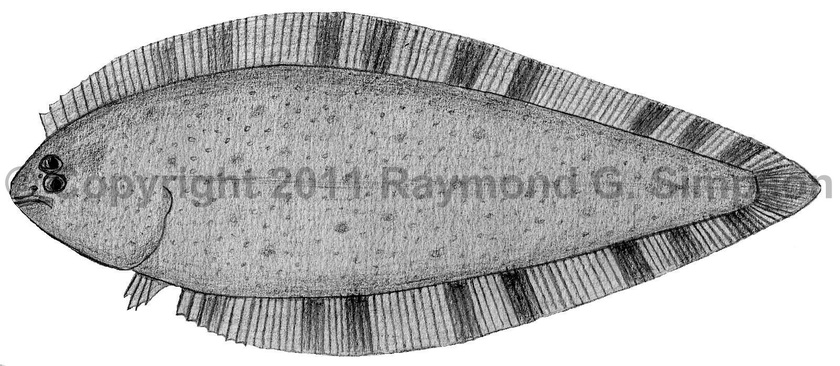
Common Name
Blotchfin Tonguefish
Year Described
Munroe, 1998
Identification
Dorsal Fin Rays: 92-95
Anal Fin Rays: 78-81
Pectoral Fin Rays: none
Pelvic Fin Rays: 4
Caudal Fin Rays: 12, rarely 11
Longitudinal Scale Rows: 98-100
Vertebrae: 51-52
Pterygiophore pattern (1st three interneural spaces): 1-3-2
Other diagnostic characters include: pupillary operculum absent, eyeballs usually touching, teeth along entire ocular side premaxilla (rarely only 3/4), ocular side lower jaw without fleshy ridge, and scales absent from blind side dorsal and anal fins.
Color
Pale yellowish to yellowish brown with no banding and at most only faint mottling on the body. Specimens without scales with dermal melanophores showing through body along vertebral column. Dorsal and anal fins body colored with a dark basal stripe, and several dark blotches along length of fin. Peritoneum black. Blind side pale without melanophores.
Size
Mature adults >85mm. Maximum size to 127mm.
Habitat
Poorly known from the continental shelf (192-373m). Sediment type unknown.
Range Map

Range
Scattered records from the straits of Florida, off the Yucatan, and in the Caribbean Sea.
References
Munroe, T.A. 1998. Systematics and ecology of western Atlantic tonguefishes (Symphurus: Cynoglossidae: Pleuronectiformes). Fish. Bull. 96(1):1-182.
Munroe, T. A. 2003. Bothidae (Pp. 1885-1895), Scophthalmidae (Pp. 1896-1897), Paralichthyidae (Pp. 1898-1921), Poecilopsettidae (Pp. 1922-1923), Achiridae (Pp. 1925-1933), Cynoglossidae (Pp. 1934-1959). In: Carpenter. 2003. The living marine resources of the Western Central Atlantic v. 3.